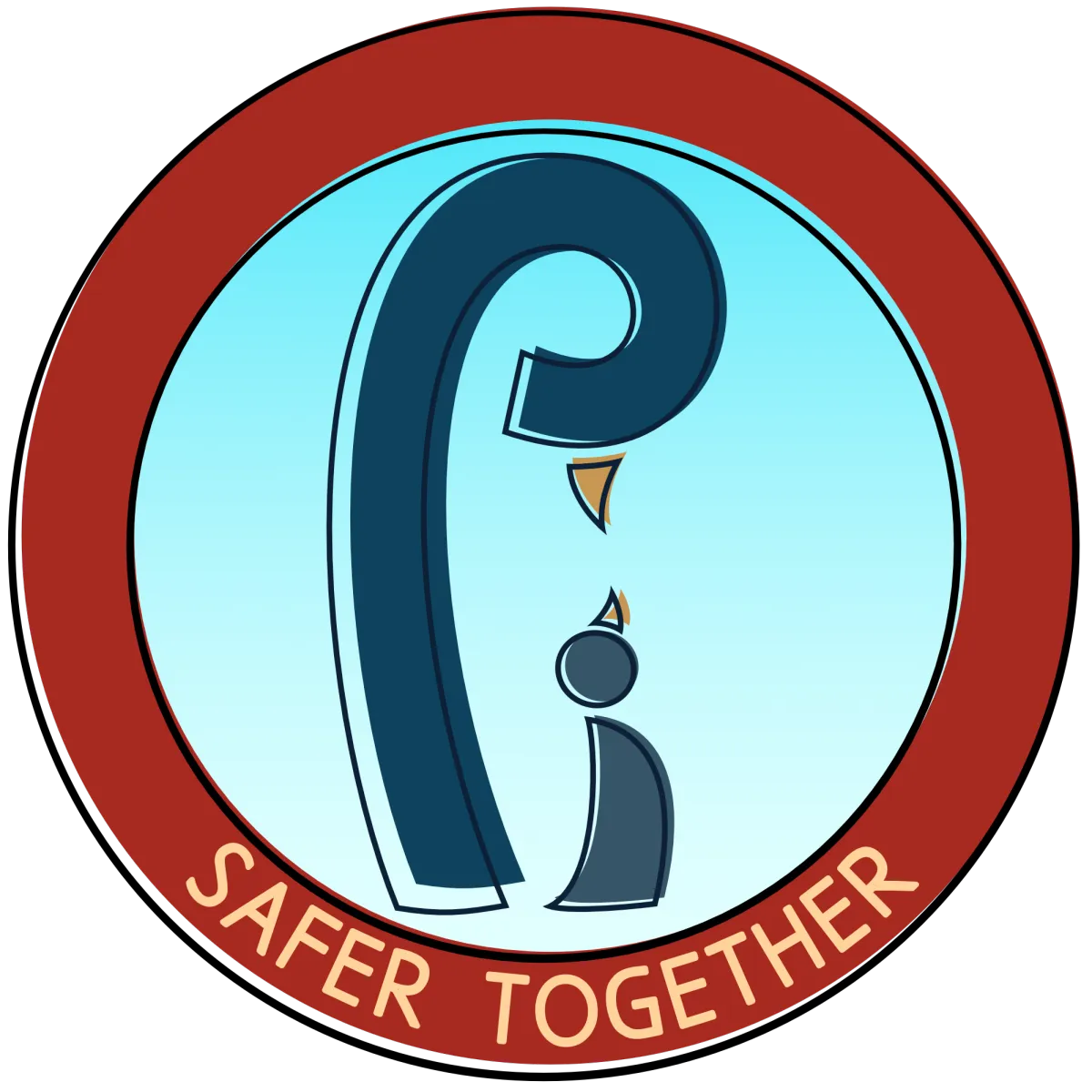



Falls
Falls are one of the most common causes of serious injury in children, and your child is going to start trying to fall as soon as they’re born. Babies are wrigglers – they squirm about and wiggle around, and from day one will actively seek the edge of whatever surface they’re on in an attempt to escape.
Many an infant has flung themselves backwards from the arms of an unsuspecting caregiver (like a humpback whale making a break for freedom). You cannot let them lull you into a false sense of security – they can and will try to fall.
Babies
Falls are one of the most common causes of serious injury in children, and your child is going to start trying to fall as soon as they’re born. Babies are wrigglers – they squirm about and wiggle around, and from day one will actively seek the edge of whatever surface they’re on in an attempt to escape.
Many an infant has flung themselves backwards from the arms of an unsuspecting caregiver (like a humpback whale making a break for freedom). You cannot let them lull you into a false sense of security – they can and will try to fall.
Always keep a one hand on your baby when changing them.
Your baby is going to start rolling sooner than you know it, and do you know what happens when a baby rolls on a table? They roll right OFF that table. Never ever leave them unattended on a raised surface. In fact, if you still have it in your knees, the best thing you can do is change them on the floor. The worst that can happen if you change them on the floor is they roll over and make a big old mess. Actually, that's pretty grim, so keep a hand on them anyway to save your carpet the trauma of a messy baby bottom...
Whenever your baby is in a pushchair, strap them in with their five-point safety harness.
It’s going to be a battle but remember that you’re much bigger than them, and you can win. This way if you put your shopping bags on the back of the pushchair and you overload it and the chair tips backwards, little one is nice and safe, if only a little upside down. Also, maybe don’t overload the handles with bags, that’s probably an even better plan. Yes, to harnesses, no to tipping. Lastly: use the breaks. Unless you’re confident that your pushchair can dodge traffic, put the breaks on the when you’re not holding it.
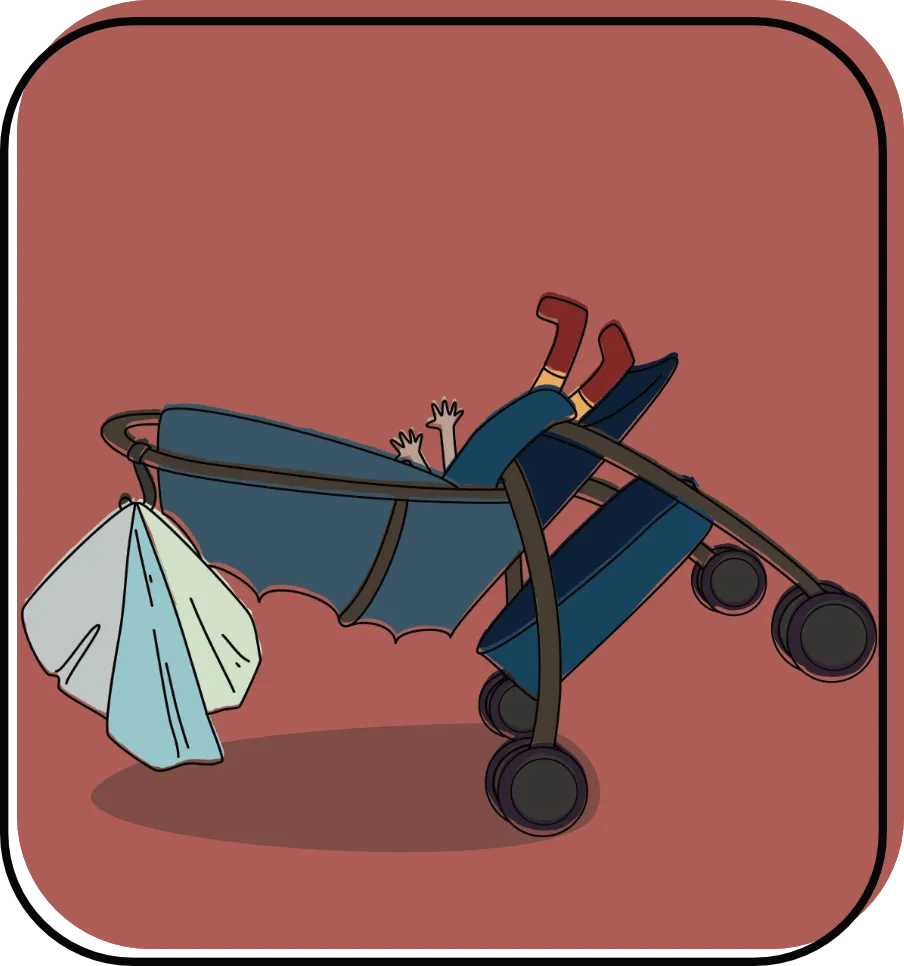

Put car seats and bouncing chairs on the floor.
Leaving them on a tabletop or chair, especially if you’re leaving them unattended (yes, even for ‘just a minute’), is actually really dangerous, and doubly so if you have an active baby. Bouncers can get a lot of momentum from some vigorous flailing, and they can shift more than you’d expect.
Highchairs have safety harnesses for a reason. Use them.
You’d think your baby is smart enough not to try to throw themselves out of their highchair – they absolutely are not; they don’t understand gravity. Pin ‘em down and strap ‘em in.
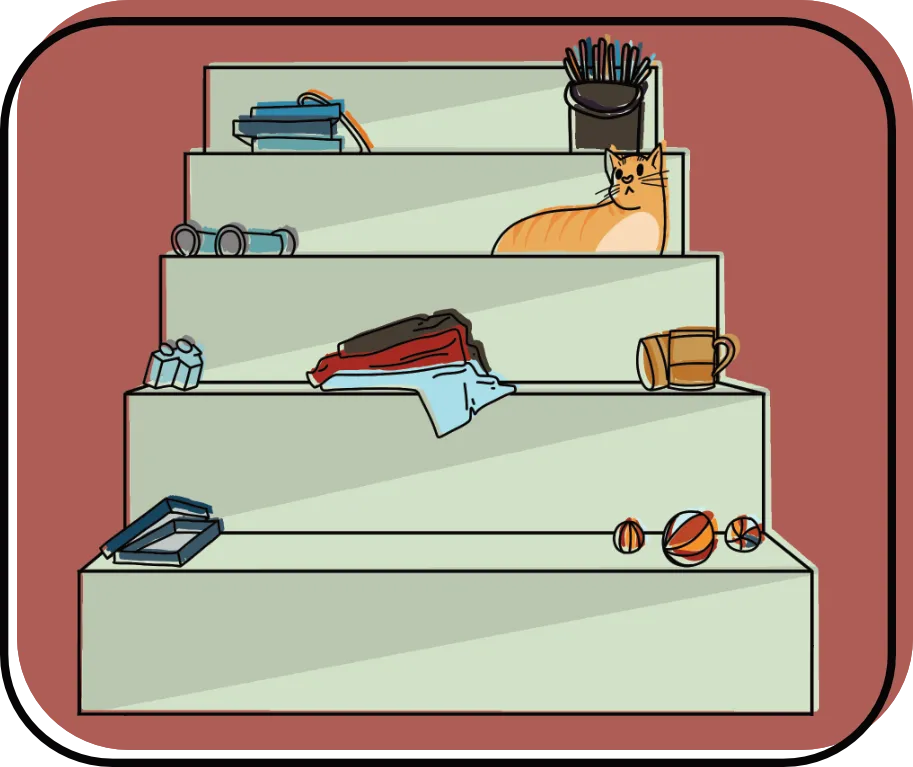

When carrying them up and down stairs, try to keep one hand free for holding onto the banister and supporting yourself.
I know, it's an unreasonable ask when you've got so much to do and carrying as much as possible up the stairs in one journey is just SO much more efficient. But children aren’t the only ones who can (and do) trip on the stairs, and you'll feel really bad if you wipe out and squash your little one when you do.
Try to keep the stairs free of clutter, like laundry, toys, or small pets who are determined to be standing wherever you’re trying to put your foot down. In fact, that’s probably good advice when you’re doing stairs in general. You’re allowed to be safe even when you’re not carrying a child.
Speaking of stairs – stair gates.
Fit them before your little one starts crawling, and practice opening and closing them one handed, and with your non dominant hand – you can thank me later. And actually do close the gate. Seriously, every time, it’s very important. If you don’t think you can remember to close the stair gate every time, consider living in a bungalow, or enlisting help from a friend or family member to sit at the bottom of the stairs and blow a foghorn every time you forget.
Bathrooms get wet. Wet surfaces are slippery.
It’s almost a futile task trying to keep the bathroom dry, but remember that when presented with a wet slippery surface, your baby will take the opportunity to fall. Consider applying slip resistant stickers or rubber matts to your bath/shower surfaces. With or without the slip resistant measures, try and keep little one sitting down, and keep them within arm’s reach.
Toddlers
Things don’t get easier once you enter the toddler phase, oh no, your warden days are just beginning. Children are naturally curious, and they’re going to want to climb in, over, and on everything they see, including but not limited to you when you’re trying to sit quietly and have a catch up with that friend you’ve not been able to meet up with in ages.
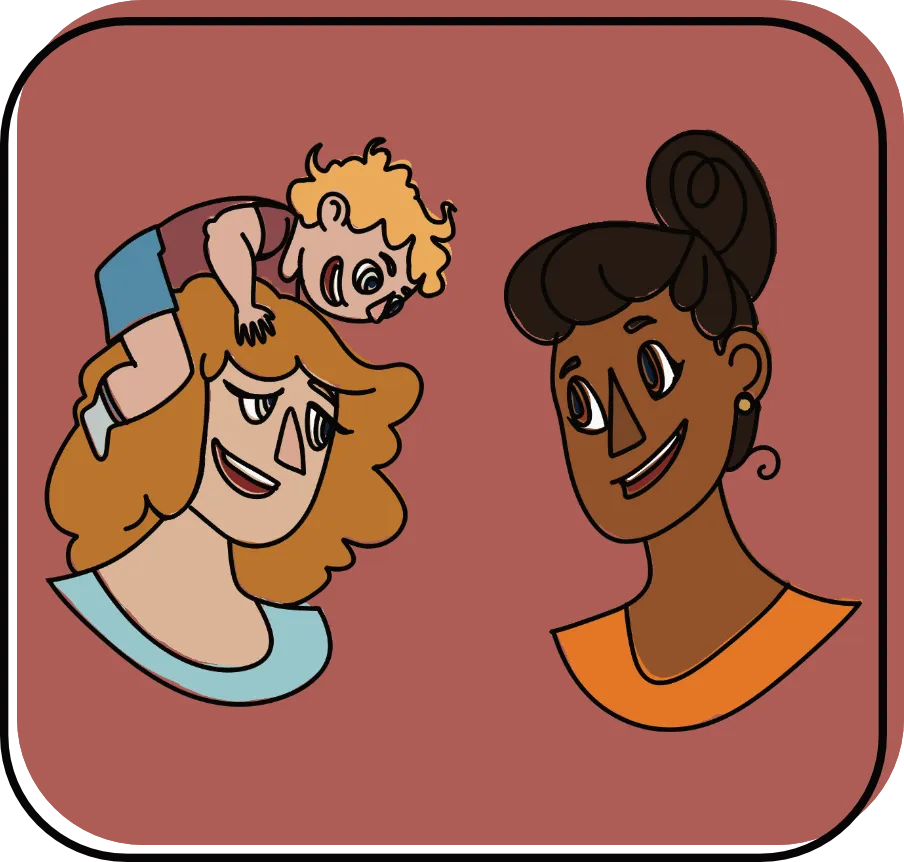
Things don’t get easier once you enter the toddler phase, oh no, your warden days are just beginning. Children are naturally curious, and they’re going to want to climb in, over, and on everything they see, including but not limited to you when you’re trying to sit quietly and have a catch up with that friend you’ve not been able to meet up with in ages.

Try and create a clear area where they'll be toddling
Remove rugs and tripping hazards like toys and electrical wires. This is a good idea in general, because you’ll be really mad if you trip over a cable and break a lamp just as you’ve gotten little one down for a nap.
That safety gate that we talked about earlier...
That should stay in place until baby is at least two years old, AND is confident doing the stairs on their own. This is not an either or situation, you need both those requirements to get rid of the stair gate.
Banister railings should be no further apart that one child's head width
If the banister railings are more than 6.5cm apart, board them up or use safety netting. Kids will find a gap and take it as a personal challenge to try and squeeze their way through it, and the firemen will laugh at you when they have to come and cut them out.
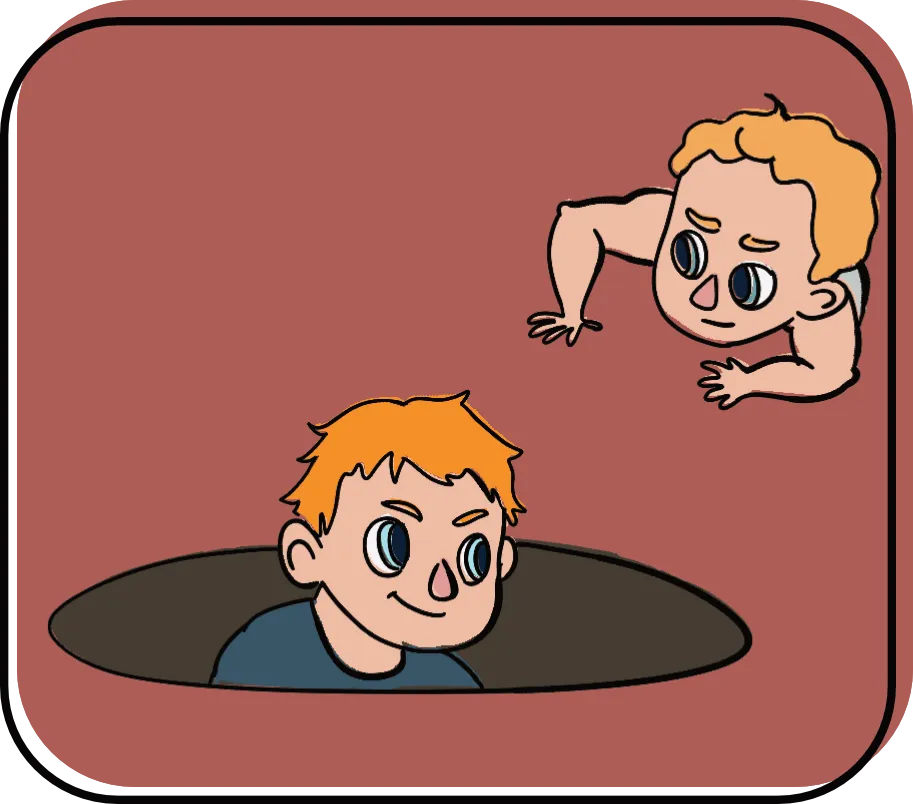

Beware toys or cushions that toddler could use to climb out of their cot
Toddlers are resourceful and always have the theme from the great escape playing somewhere in the background.
Shopping trolleys also present a most exciting escape opportunity
Flaps that can be lifted and shimmied under, and all those bars providing handholds for climbing – irresistible. If you’re going to put your child in a shopping trolley and you don’t feel like zip-tying them down, perhaps the provided child seat with the safety belt is the best way to keep them sitting still and out of trouble.
Likewise, windows...
Keep low furniture – or any furniture that your child might be inclined to scale – away from windows. One emergency medicine doctor has said that it seems like she sees more cases of children falling out of windows in the early spring than any other time of year. If you're opening your windows on the first sunny days of the year, be extra certain your little one can't climb up on anything to investigate.
Speaking of climbing...
Once your child has learned to walk confidently, and mastered the art of casual scaling of obstacles, they will begin to climb in earnest. Children under five have the physical ability to climb surprisingly high, but have not yet developed fear, or an understanding of the consequences of a fall.
At this age your child won’t have yet understood that they are weaker and slower when they are tired or unwell (in fact, many adults have difficulty understanding this too, take that rest day when you need it, don't be a toddler now). Plan quiet activities for these occasions to minimise the risk of an unexpected fall, especially if being under the weather makes your precious darling bundle of joy EXTRA whiny and difficult to handle. We understand, we've all been there...
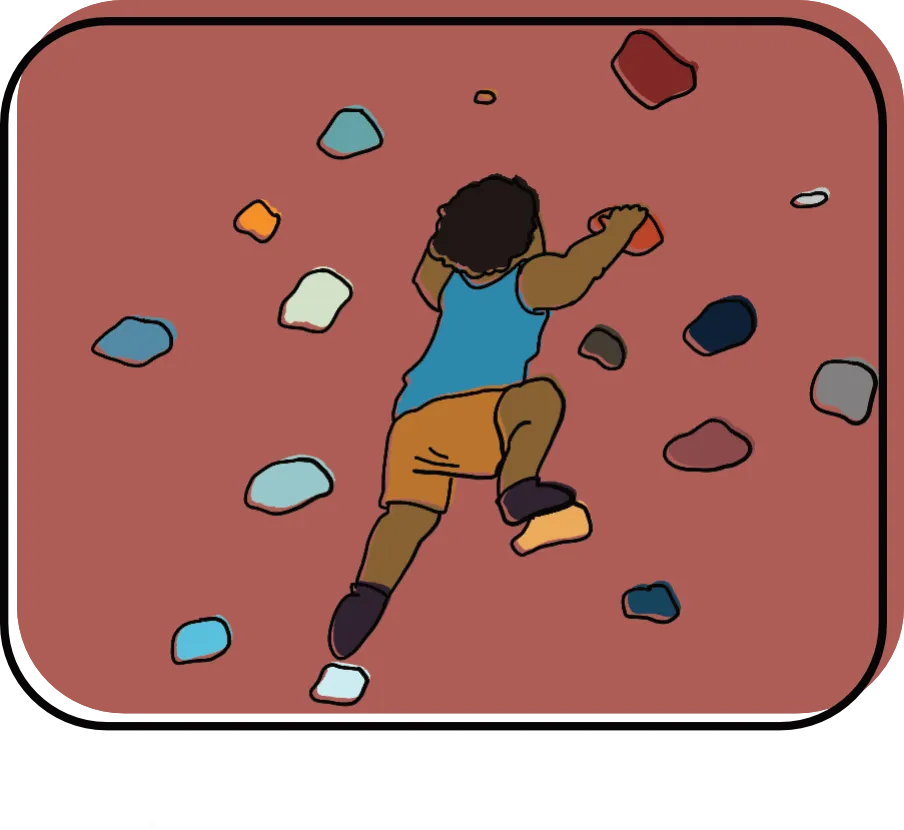

Children
I'm classifying children as 'all ages between toddlers and teenagers'. It's a pretty big category, but honestly, once they're off and walking, running, hop, skip, and jumping around on their own, there's only so much you can do. If they're going to find a tree root to trip over, they're going to do it no matter how loudly you yell from the sidelines.
But here's what you can do:
Bunk beds are not recommended before the age of six
At least, not the top bunks. They’re easy to fall out of, and taking away the ladder so that they stay in bed longer and you get a lie in objectively doesn’t work.
It is recommended that they windows don’t open more than 10cm
As well as keeping that tempting low furniture away from windows (remember, you implemented that when little one was just beginning to walk), make sure windows are fitted with locks or safety catches.
Your child might be old enough to know that they probably don't WANT to jump out of the window anymore, but if you've ever had a child so excited to see the construction workers using the digger at the end of the road, you'll know how far a child will lean out of a window trying to get a better look. It's easy to topple. That's all I'm saying.
Sharp things are SHARP
Scissors, knives, and glassware are just some of the sharp objects that can cause serious injury if a child falls. Teach them not to run with these objects, and show them how to carry them safely with the sharp bit pointing down.
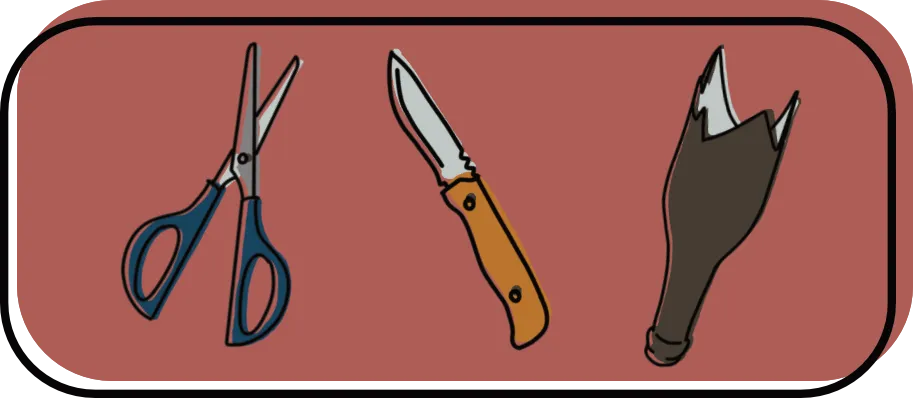

Children will use their mouths as extra storage space.
Don’t let them walk or run with anything in their mouths – lollipops and cutlery are obvious dangers, but your child can and will get creative – toys, pens, circle drawing compasses, mobile phones, abstract pieces of plastic they found under the sofa. Even non sharp and pointy things, like marbles, pebbles, and your ring that you took off to do the washing up can be a choking hazard, especially if they're running around while 'holding' them.
Children are like magpies, but harder to reason with.
Remember that children lack survival instincts
No one wants to be a helicopter parent, but do make sure you’re supervising your children on play equipment, and make sure it’s appropriate for their age. If they break a leg coming off the swings too high, you’re the one who has to lose a couple of hours to the A&E waiting room.
Be especially careful and ensure children are supervised at all times when in high places like on balconies or crossing bridges. Try to keep furniture away from the railings, and please don’t let your little one do the balance beam on the handrail. I know it seems obvious, and yet here we are.
Teenagers
Look, if your teenager hasn't figured out by now that they shouldn't be running with scissors, you're pretty much out of luck.
Eyes up
We've all seen teens stepping out on to the road with their eyes glued to a screen. Try to convince your child to put their phone away when they're walking. I would consider getting out the old airhorn and blasting them occasionally when you're out and about if they stop paying attention to their surroundings.
Or if that doesn't work, you could use the moments they're distracted to film yourself doing a TikTok dance behind them. That's probably the best way to get them to maintain situational awareness.
Sports means falls
If your teen plays sports, they're GOING to have a collision with a team mate at some point and fall. It's a universal truth. There's no way to prevent this happening.
If you're sending your teenager to an organised activity (like a club or class), just take a minute to check that the person in charge has the correct training, documents, and kit in case there's an injury.
If they're heading out on their own to play footy in the park (teenagers still do that, right?) just make sure they have the vaguest idea what to do if there's an accident. Even if that 'what to do' is just 'call me'. Drill home to them that 'walking it off' isn't always the best course of action, and that being tough in front of your friends is dumb if it means they have to sit out for six weeks because they've done more damage than necessary.
More information here on the sports page
Resources
Resource link
Copyrights 2025 | PiPN™ |